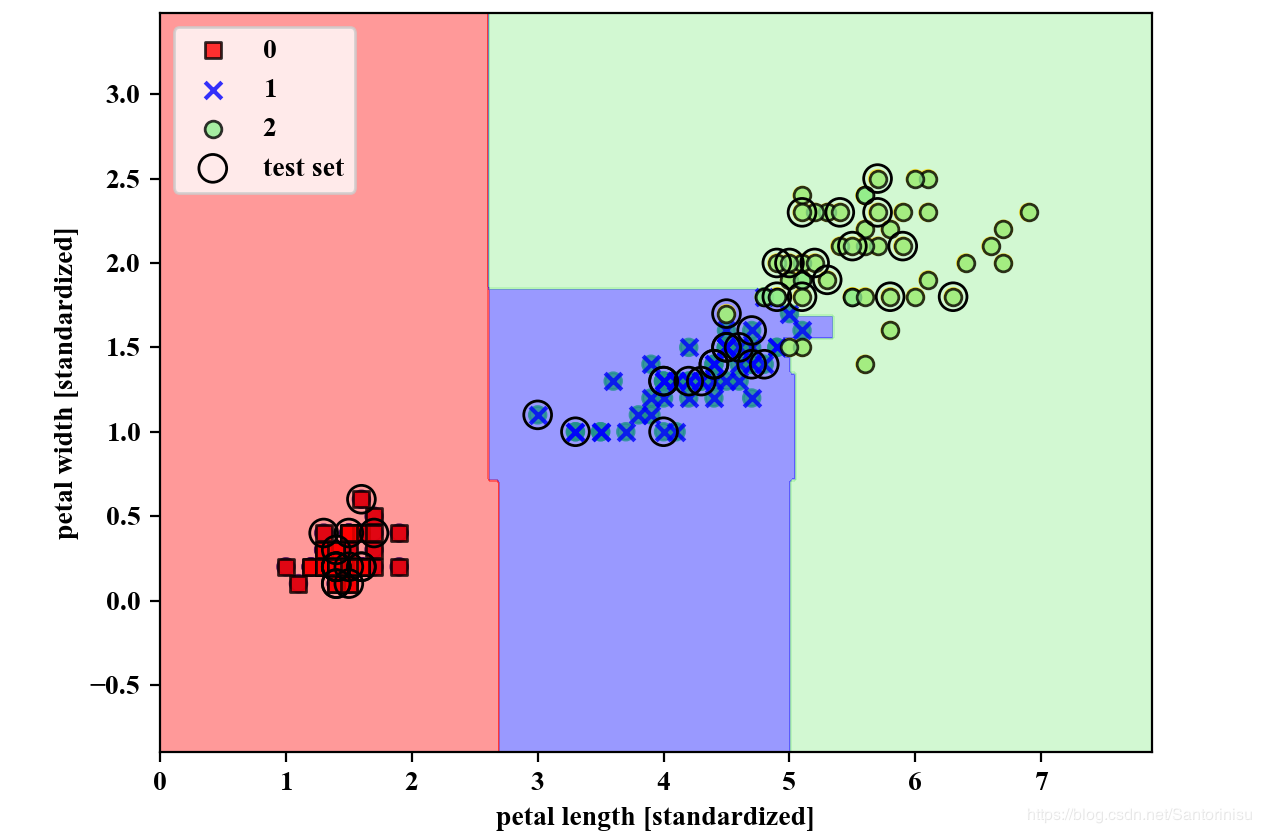机器学习-随机森林(Random Forest)
Section I: Brief Introduction on Random Forest
作者:Santorinisu
Random forests have gained huge popularity om applications of machine learning during the last decade due to their good classification performance,scalability, and ease of use. Intuitively, a random forest can be considered as an ensemble of decoson trees. The idea behind a random forest is to average multiple trees that individually suffer from high variance, to build a more robust model that has a better generalization performance and is less susceptible to overfitting. The major steps are summarized here:
Step 1: Draw a random boostrap sample for each decision tree with replacement Step 2: Randomly select d features without replacement.From
Sebastian Raschka, Vahid Mirjalili. Python机器学习第二版. 南京:东南大学出版社,2018.
import matplotlib.pyplot as plt
from sklearn import datasets
import numpy as np
from sklearn.model_selection import train_test_split
from sklearn.ensemble import RandomForestClassifier
from DecisionTrees.visualize_test_idx import plot_decision_regions
plt.rcParams['figure.dpi']=200
plt.rcParams['savefig.dpi']=200
font = {'family': 'Times New Roman',
'weight': 'light'}
plt.rc("font", **font)
#Section 1: Load data and split it into train/test dataset
iris=datasets.load_iris()
X=iris.data[:,[2,3]]
y=iris.target
X_train,X_test,y_train,y_test=train_test_split(X,y,test_size=0.3,random_state=1,stratify=y)
#Section 2: Invoke RandomForest model
forest=RandomForestClassifier(criterion='gini',
n_estimators=25,
random_state=1,
n_jobs=2)
forest.fit(X_train,y_train)
X_combined=np.vstack([X_train,X_test])
y_combined=np.hstack([y_train,y_test])
plot_decision_regions(X=X_combined,
y=y_combined,
classifier=forest,
test_idx=range(105,150))
plt.xlabel('petal length [standardized]')
plt.ylabel('petal width [standardized]')
plt.legend(loc='upper left')
plt.savefig('./fig3.png')
plt.show()

参考文献:
Sebastian Raschka, Vahid Mirjalili. Python机器学习第二版. 南京:东南大学出版社,2018.
作者:Santorinisu
相关文章
Quirita
2021-04-07
Galatea
2021-06-06
Iris
2021-08-03
Grace
2020-11-05
Rowena
2021-04-09
Hanna
2023-05-13
Jayne
2023-05-13
Winona
2023-05-13
Fawn
2023-05-13
Echo
2023-05-13
Maha
2023-05-13
Kande
2023-05-15
Viridis
2023-05-17
Pandora
2023-07-07
Tallulah
2023-07-17
Janna
2023-07-20
Ophelia
2023-07-20
Natalia
2023-07-20